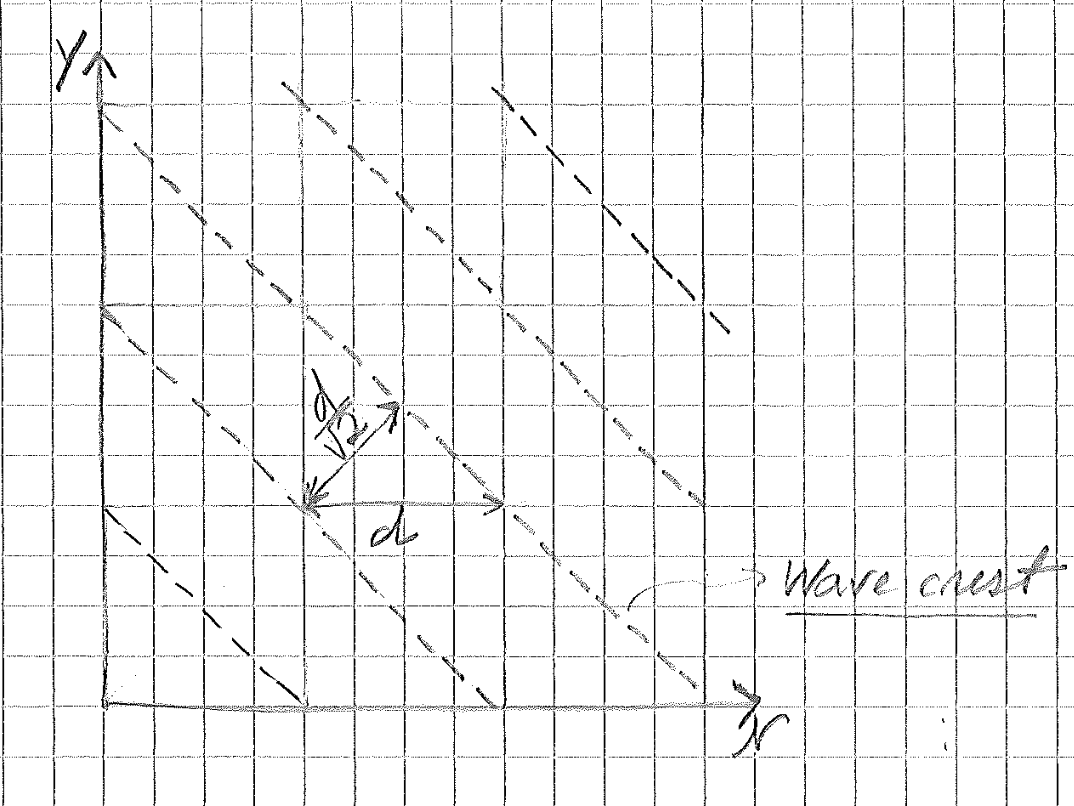The two dimensional advection equation
The two dimensional advection equation#
Consider the 2d advection of field \(F\) under the velocity field \(\vec{V}\):
Let \((x_m,y_l)=(m\Delta x, l\Delta y)\) and \(t^n=n\Delta t\). Applying central difference formulas to the time and spatial derivatives of \(F\), we obtain:
We shall apply Von Neumann stability analysis to (63), by substituting a solution of the type:
where \(k_x\) and \(k_y\) are the wavenumbers in \(x\) and \(y\). After some manipulation, we have
Defining \(D^n=B^{n-1}\), we can write (64) as matrix recurrence relationship:
where \(r=u\frac{\sin k_x\Delta x}{\Delta x}+v\frac{\sin k_y\Delta y}{\Delta y}\). The eigenvalues of the recurrence matrix of (65) are given by
For the scheme to be stable, we must have \(|\lambda_\pm| \leq 1\), which is true if \(\Delta tr \leq 1\), or
Let \(u=V\cos\theta\) and \(v=V\sin\theta\) and write
For \(\Delta x=\Delta y=d\), we shall have
When \(\sin k_x\Delta x=1\) and \(\sin k_y\Delta y=1\),
which is maximum when \(\theta=\pi/4\) and \((\cos\theta+\sin\theta)_{\theta=\pi/4}=\sqrt{2}\), resulting in
So we find that for 2d advection there is a reduction in the stability limit, which has to be 30% smaller than the limit in the 1d case.
To understand how this reduction comes about, let us consider a wave moving at a \(\pi/4\) angle to the \(x\) axis (Fig. 10).

Fig. 10 Wave moving at a \(\pi/4\) angle to the \(x\) axis.#
The minimum stability is associated with a wave of wavelength \(2d\) in both the \(x\) and \(y\) directions. The absolute wavenumber of this wave is
where \(k_{1D}=\pi/d\) is the wavelength of the shortest resolvable wave in a 1-d grid of size \(d\).
Since \(k_{2D}\) is larger than \(k_{1D}\) by a factor of \(\sqrt{2}\), the effectice wavelength in 2-d will be shorter than the wavelength in 1-d by an equal factor, and therefore the time must be reduced by that factor to fullfill the stability criteria.